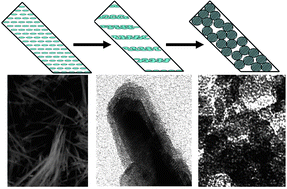High surface area ordered mesoporous nano-titania by a rapid surfactant-free approach†
Abstract
Immersion of solid

* Corresponding authors
a
Department of Chemistry, Biocenter, Swedish University of Agricultural Sciences (SLU), Box 7015, Uppsala, Sweden
E-mail:
vadim.kessler@slu.se
b Department of Forest Products/Wood Science, SLU, Box 7008, 75007 Uppsala, Sweden
c Clermont Université, ENSCCF, Institut de Chimie de Clermont-Ferrand, BP 10448, F-63000 Clermont-Ferrand, France
d CNRS, UMR 6296, ICCF, F-63171 Aubiere, France
e School of Chemistry and CRANN Institute, Trinity College Dublin, Dublin 2, Ireland
Immersion of solid

 Please wait while we load your content...
Something went wrong. Try again?
Please wait while we load your content...
Something went wrong. Try again?
G. A. Seisenbaeva, G. Daniel, J. Nedelec, Y. K. Gun'ko and V. G. Kessler, J. Mater. Chem., 2012, 22, 20374 DOI: 10.1039/C2JM33977C
To request permission to reproduce material from this article, please go to the Copyright Clearance Center request page.
If you are an author contributing to an RSC publication, you do not need to request permission provided correct acknowledgement is given.
If you are the author of this article, you do not need to request permission to reproduce figures and diagrams provided correct acknowledgement is given. If you want to reproduce the whole article in a third-party publication (excluding your thesis/dissertation for which permission is not required) please go to the Copyright Clearance Center request page.
Read more about how to correctly acknowledge RSC content.
 Fetching data from CrossRef.
Fetching data from CrossRef.
This may take some time to load.
Loading related content
